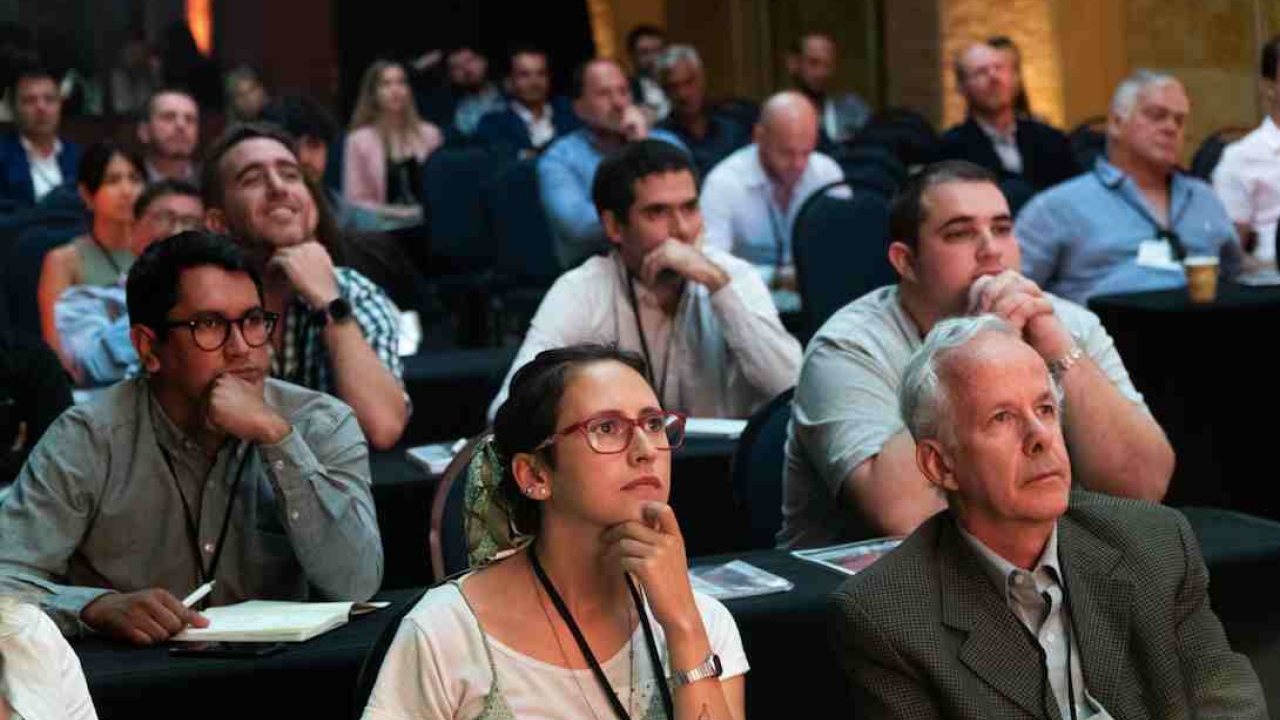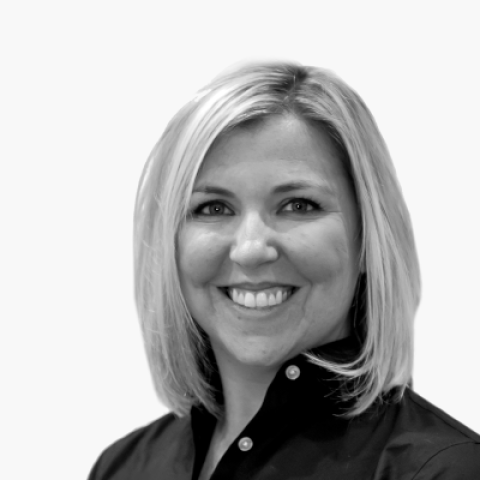Label Summit returns to Chile

The conference, hosted at Espacio Riesco Convention Center on March 10-11, was chaired by Labels & Labeling editor James Quirk, with 11 conference discussions and in-depth expert-led presentations taking place over the two days. The focus was firmly on printing, branding, design and wine, and sustainability was a recurrent theme.
Tasha Ventimiglia, Label Summit Latin America 2020 event director, commented: ‘Once again, we’re delighted to bring the industry together during the latest Label Summit Latin America. Despite an ambiguous period, we were able to host a lively and extremely well-received conference, with truly inspiring speakers and fantastic educational sessions covering the most topical converter, design and sustainability issues facing the region’s label and package printing industry.’
Delegates also took advantage of the exclusive accompanying exposition showcasing the latest technology driving the region’s industry, with 57 exhibiting companies taking part, including AB Graphic. The company’s Sebastián Rosero said: ‘The Summit was a key show for AB Graphic, allowing us to engage with visitors on the scale of new developments in our finishing equipment and the opportunities available, particularly in increased automation and faster workflows. We had some constructive discussions with the packaging group All4Labels Argentina, and barcode and RFID technology specialists Sato, also based in Argentina, both of which should result in new business.’
Echoing this, Hernán Braberman, partner and executive design director at Tridimage, who gave a presentation in the conference, said: ‘The latest Label Summit Latin America which took place in Chile confirmed once again that it is the main event in the region for the label and packaging industry. There I had the chance to talk with converters, suppliers of software and machinery and design agencies about future for the label and packaging industry in Latin America.’
Day one
Mariana Soto, general manager of Cenem, kicked off the conference with a presentation which focused on climate change and how it impacts the Chilean economy. Climate fluctuations are particularly hard on the country’s food and wine regions, a key vertical for the region’s label producers. And while Chile may be known for its vibrant wine industry, it remains one of the top food exporters in the world.
‘Our country is really small, and therefore our industry cannot just grow on internal consumers,’ Soto said. ‘Exports are a main driver for growth.’
Soto’s session was a perfect segue to the next presentation, from Javier Ibero, Latam manager, for Eadec. Eadec is a Spanish printer of adhesive labels and flexible packaging which established a plant in Chile in 2004. In 2016, it opened a facility in Peru. ‘One of the most important things for a manufacturer of labels is to identify our environmental impact, so we have as little impact as possible,’ he said.
At Eadec, measuring its waste output is the key to reducing it. ‘We have to see the starting point, so we can see where we have to improve,’ Ibero continued.
When Eadec opened a satellite location in Peru, it recycled the pallets that the equipment arrived in, turning them into printshop furniture. The goal, according to Ibero, is to transform into a circular economy, where the waste of one project can be used as the beginning of another.
The keynote speakers, Askold Zimmermann and Suleik Quintero from the event’s gold sponsor, GlobalQuality. They explained how their technology can help printers save time by removing non-value added tasks through a workflow system.
The next presenter, Ignacio Ramos of R&R Impresores, a printer in Santiago, Chile, discussed what he called the great migration, or the movement of commercial printers into the label industry. He gave the example of his own company’s conversion to labels and packaging.
Citing statistics from a recent SGIA study of printers in North America, Ramos explained that 95 percent of almost 500 surveyed respondents said that there is opportunity to expand their business. Of that 95 percent, 39 percent are already in the process of investigation and 33 percent have already diversified into new markets. ‘By far the main printing migration is from commercial,’ Ramos said.
Before it entered the label market, R&R Impresores focused its research in three key areas: market, technology and the human impact to its business.
Adding workforce is proving difficult, Ramos said. There are at least three people needed to produce a label, meaning more salaries were added to the books, not to mention the difficulty finding and training new employees.
Yet these concerns are not proving to be a deterrent: of the commercial segments considering moving into another sector of printing, 39 percent are considering moving into labels, according to Ramos.
However, the label market can be challenging, as the next presenter, Francisco Bardi explained. Bardi, senior advisor of Graphic Executive Management, discussed meeting the demands of labels in a changing era. With more than 25 years of experience in the industry, he shared his insights about the importance of having a technological advantage.
Adding value to labels is the main way converters can avoid producing a commodity product. He discussed value-added effects such as embossing and foils, as well as smart label technology such as RFID, NFC and augmented reality.
‘Technology is always surprising us,’ he said. ‘You have to think about using these tools to help your sales people.’
He added that the best strategy is to develop a relationship with your customers that is built on more than price. ‘You want a relationship that is more than that of a vendor who sells products that are cheaper or more expensive, and that’s all. The task is building a relationship in the long term, so the client is going to call you first. The client is the most important part. If they do well, I am going to do well, but for me to do well I have to have a sales team that is creative for my clients.’
Day one ended with a panel discussion with label converters from the region, chaired by Constraseña magazine director Juan Pablo Figueroa. The panel featured Germán Calvi of Etiketten in Argentina, Ignacio Cortiñas of Eadec Chile, Jorge Garrido of Garinos Hnos in Uruguay, and Ignacio Ramos of R&R Impresores in Chile. Topics under discussion ranged from digital printing and recruiting press operators, to staying ahead of the competition.
In terms of automation and technology, ‘we always want to be one step ahead of people who are following us,’ Calvi said. ‘The Southern Cone faces social unrest which is almost permanent, and we have work hours that are shorter, so we have to automate processes wherever we can. That gives us the incentive to invest.’
Given the speed of innovation in the label industry, Garrido said, ‘we must be careful with our investments. There is a revolution that we are going through and it’s very fast. This change may be harmful for us if we are not careful. We have to pay attention to technology developments.’
Just as important as the technology on the shop floor are the people operating them. Ramos said: ‘When you are purchasing a machine you are not just purchasing a machine. It’s important that your supplier can give you the knowledge you need to get everything you need out of that machine.
While quality workers are valuable to any business, so is knowledge of operation costs. At Eadec, the company continually reviews its material consumption to ensure success.
Cortiñas said: ‘How much ink, paper and other materials you are using really determines if you are making any money. If you are unable to know those parameters, and you are lowering prices without knowledge, you may go from making money to making no money. That’s why it’s so important to measure everything. We review, review and review some more. It’s fundamental to everything we do.’
Day two
The second day of the conference opened with Labels & Labeling editor James Quirk, who offered a comprehensive view of label and packaging trends from around the globe. He offered updates on trends in North America, Latin America, Europe, India, Southeast Asia and China, compiled by the magazine’s global editorial team, before highlighting the technical trends which are driving the industry. These included the impact of digital printing technology and the response from conventional press manufacturers – who have increasingly automized conventional label production and partnered with inkjet suppliers to create hybrid press offerings; the rapid development of management information systems to streamline and automate production processes; the arrival of wide web press manufacturers into the narrow web sector; and the trend towards wider web presses which creates opportunities for diversification into shrink sleeve and flexible packaging production.
Luis Arevalo, packaging engineering director at Kellogg company, kicked off an afternoon of largely branding and design focused presentations. Arevalo discussed the design elements important to a large CPG. ‘The brand is an emotion,’ he said. ‘Food is a function, but the brand is the heart. Eighty percent of buying decisions are based on emotion, so if we have that emotional connection with consumers, they are more likely to buy our brands.’
This is the reason why personalized campaigns do so well, Arevalo said. ‘Tell your story: that’s how we can connect with consumer’s emotions. Tell them who you are, what you do, what you believe in, and what will it be like to use the product. Answer the question: will I trust you?’
Hernán Braberman, partner and executive design director at Tridimage, took the audience through what he called his ‘design playlist’. Braberman pointed out all the design elements that appeal to each generation. Baby Boomers prefer classic images, and a sense of legacy; Gen X likes nostalgia and items that feel luxurious but are affordable; Millennials want packaging that can be photographed and which translates well to social media, typically with vibrant colors and personalization; Gen Z prioritize social causes, and their boundary between the physical and virtual worlds are often blurred.
Following Braberman’s discussion, Ignacio Zermeño from MGM Mexico discussed counterfeiting measures that labels can take, including RFID, NFC inlays, microtext, void, guilloche printing, and closure seals.
The conference program closed with a panel discussion focused on design and the wine label sector in Chile. The session was moderated by L&L’s James Quirk and featured panelists María Jesús Valdés of JVD Studio, Eduardo Wexman of ValueBranding, José Mingo of CCL Chile and Viña Aresti, and Carolina Lucero of Armaria Arquitectura y Diseño.
There are many elements to the design process, and Mingo advised attendees not to overlook the importance of the initial briefing and marketing proposal for a product design. He added that designers need to be up to date with technology suppliers, so both elements can work together.
To take advantage of globalization, Lucero emphasized that design should be overarching and universally appealing, rather than specific to a certain region.
The panel wrapped up by returning to the focus at the beginning of the Label Summit: sustainability. According to Wexman, ‘the wine industry in Chile has been a pioneer in terms of sustainability.’
Stay up to date
Subscribe to the free Label News newsletter and receive the latest content every week. We'll never share your email address.



